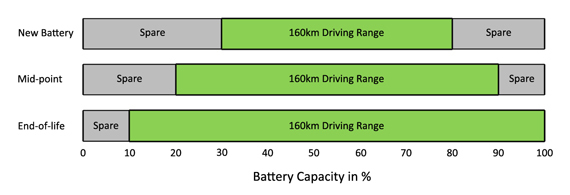Hi,
I’ve been wrestling with an idea of actually building my own electric long board (not many drop decks around there and I like that sort of board flex points arrangements).
But (of course I might be blind, to not see those) it became apparent to me that most of people concentrate a lot on motor controllers and actual motors but there is very little improvement in terms of BMS.
So from my experience a BMS will be responsible for:
- energy counting coming in and out of battery to have a full knowledge of current SOC,
- continuous monitoring of each cell voltage
- continuous measurement of cell temperature
- provoding balancing durring charging
- imposing a drive and regen current for motor controllers based on SOC, cell min / max voltage and temperature.
- dictating charge current for charger connected to battery pack
Common practice is to blend BMS with distribution unit, distribution unit is usually responsible for:
- measuring current coming in and out of battery pack
- comparing current current against BMS imposed limits and if those are exceeded perform a controlled shutdown (bus isolation)
Another problem that I’ve seen is that any isolation units that exists (or distribution units) are fairly limited in max current. I was considering a build with 10S running at 200A drive and 100A regen and as far as I can tell I’m on my own.
Please correct me if unit like that does exists, and please don’t try to deteriorate this topic for no reason.
I’ve also noticed that there is fair amount of people that do complain about their range and other aspects that do indicate that they smash their battery because some cells have different impedance to others (heat spots can cause that as well). Decent 18650 will give you 5000 cycles for capacity drop of 20% if used within current / voltage / temp limits. From our tests of batteries you can kill bests cells quicker than 20 cycles (drop them more than 50% of capacity), without even touching region of thermal run away. Also there seems to be not much concern about batteries going for runaway among some users … and scary is that they chose polymers that we know that those can go with decent fireball.
Now recently I was doing a small design work that included a set on nice mosfets that can do 43 amps and provide current measurement within single package and small footprint (and verrrryyyyy low ON resistance resulting in low loss).
So my intention was to actually create a BMS that allows all mentioned functionality. Now if using a right chip, there could be additional functionality include:
- providing it with 4 can busses it could be connected to 4 separate VESC motor and dictating current limit PER wheel.
- reading realtime wheel speed from each vesc separately
- dictating torque request independently to each wheel
- implementing a speed control where a central unit is reading wheel speeds and computing whenever we are in turn or not and altering torque based on those parameters.
- implementing a simple 4 wheel control with drive and regen torque bias, still not exceeding base battery limits.
- if one would be veeerrrryyy advantageous, by controlling each wheel separately there is a way to implement stability program that would allow driving a softer suspension setup downhill, and having motors eliminate potential of tail oscillation.
FYI, I don’t fancy changing it into any form of business and would prefer for it to be open source so more people can benefit (I like the vesc initiative !)
 ?
? Using transistors of a soft switch for current measurement is not by any means perfect but it does simplify design, reduces bom, and provides a better measurement than hal effect
Using transistors of a soft switch for current measurement is not by any means perfect but it does simplify design, reduces bom, and provides a better measurement than hal effect  .
.